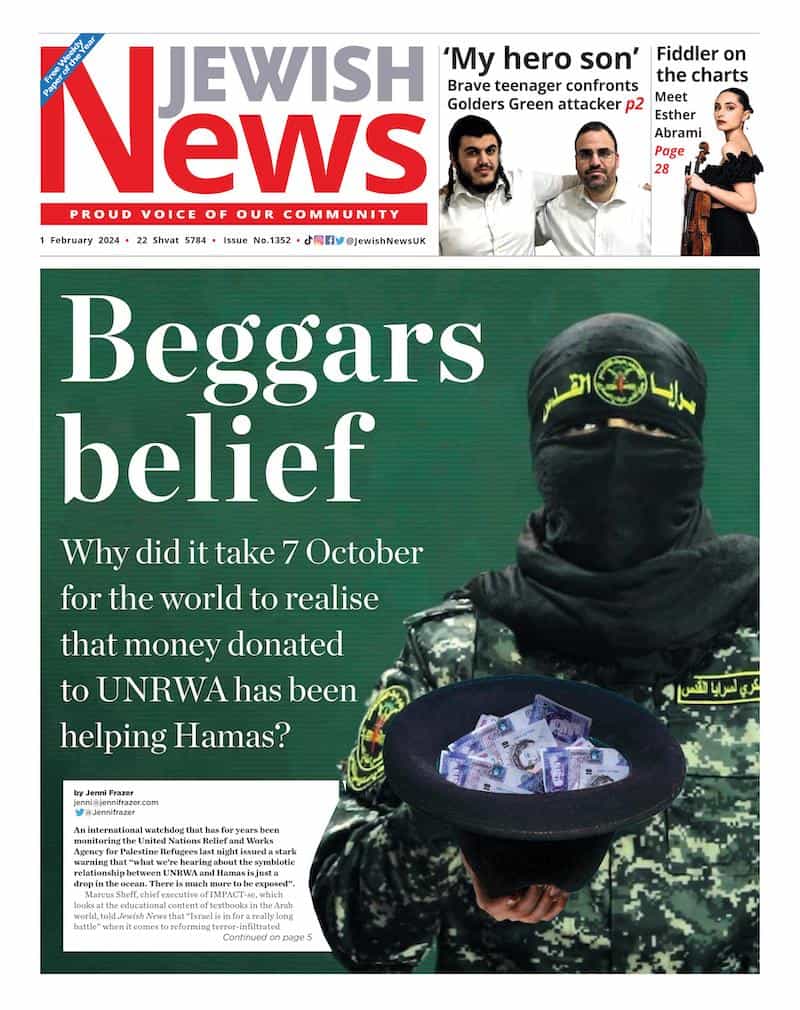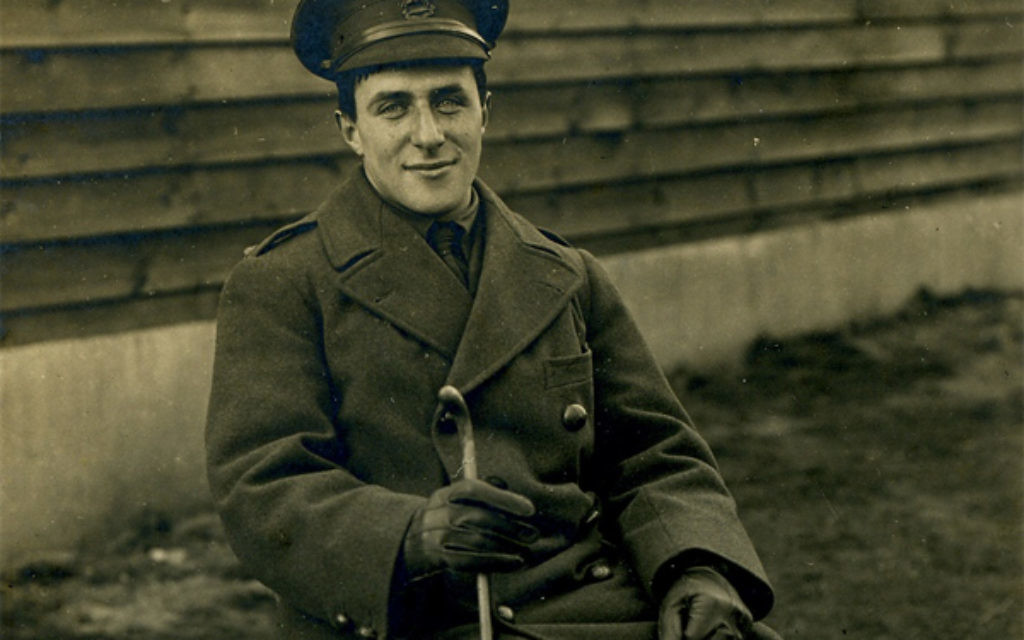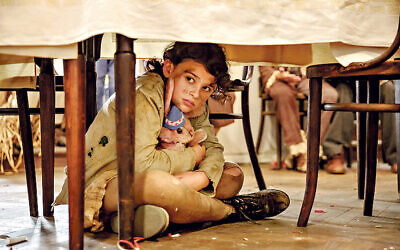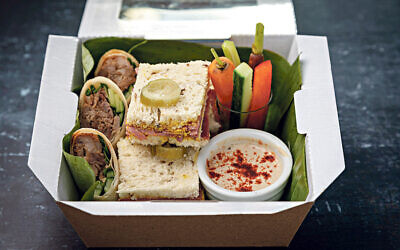Judaism in the trenches: The Jews who fought in World War One
A compelling new exhibition sheds fresh light on the 50,000 British Jews who fought in World War One. Francine Wolfisz discovers how they maintained their faith amid the sheer horror of the trenches
Life in the trenches was brutal and terrifying – but that still didn’t stop some of the more observant Jewish recruits from building a succah, donning tefillin or observing the High Holy days, as a fascinating new exhibition reveals.
For King and Country?, which opened to the public yesterday, is the collaborative work of Camden’s Jewish Museum and the Jewish Military Museum, in Hendon.
Get The Jewish News Daily Edition by email and never miss our top stories Free Sign Up
Through an array of 140 exhibits – ranging from postcards, newspaper clippings and diaries to uniforms, medals and oral histories – the exhibition sheds new light on the 50,000 Jewish soldiers who fought for Britain during the First World War.
Among the stories featured are those of Russian-born Hyman Rutstein, who maintained his faith even in the trenches. The tefillin he carefully preserved with him throughout the brutalities of war is on display.
Marcus Segal, who signed up as a teenager in 1914, wrote more than 160 letters to his parents from the front line until his death in 1917, detailing his Jewish life during warfare, which included building a sukkah in the trenches and providing assistance to Reverend Michael Adler, the first Jewish chaplain employed by the British Army on active service.
Also on display is the diary of Florence Oppenheimer, a military nurse who served on a hospital ship in the Mediterranean, as well as Egypt and Palestine. She later went on to become a best-selling cookery writer under the name Florence Greenberg.
Curator Roz Currie describes the wartime efforts of British-Jewish recruits as “a very powerful contribution” and cites the example of five who received the prestigious Victoria Cross.
“For such a tiny community, five VCs is a remarkable number”.
They comprised Frank de Pass, Jack White, Robert Gee, Leonard Keysor and Issy Smith. All are due to be honoured with special commemorative paving stones laid in their home towns, to coincide with the centenary of the First World War.
A section of the exhibition pays tribute to the 38th Battalion of the Royal Fusiliers, also known as the 1st Battalion of the Judeans, a Jewish fighting force recruited from the East End, who were nicknamed the “Schneiders’ regiment”, as so many were tailors.
It was founded in 1915 and sent to Palestine in 1917, headed by General Edmund Allenby. Several Judeans became notable in later life, including Zionist activist Joseph Trumpeldor, artist Jacob Epstein and Israel’s first Prime Minister, David Ben Gurion.
Not all Jews were however fighting for the Allies and in a rare moment in the community’s history, Jews found themselves fighting against Jews. Some 100,000 from Germany and 300,000 from Austria-Hungary signed up to fight for their country, but as the exhibition shows, their efforts would sadly later count for little in the face of Nazi persecution.
There were of course those also who did not want to fight, either on religious or political grounds and for recent immigrants to Britain, the prospect of war was particularly troublesome.
Currie explains: “There were real problems for the Russian immigrants. They didn’t feel British, they couldn’t speak English and they were reluctant to serve alongside the very people they had just fled from persecution.
“Many had escaped the Russian draft – conditions in the Russian army were horrific and in the mid-19th Century, you had to serve 25 years or more if you were Jewish.
“But there did come a time when they were expected to join the British army or face deportation. Some did actually return, while others simply disappeared.”
A few were exempted, but others were forced to serve as non-combatants or faced imprisonment with hard labour, as in the case of Morris Miller, who joined 1,000 other conscientious objectors at Dartmoor Prison.
The First World War had divided the Jewish community both at home and abroad, but there were some positive outcomes, including the formation of the Association of Jewish Ex-servicemen and Women (AJEX). It also brought some much-needed unity between the settled and immigrant communities.
“The war brought about a readdressing of what it means to be British and Jewish,” adds Currie. “The settled community became more Jewish and the immigrant community became more British and they finally met in the middle.”
For King and Country? runs until 10 August at the Jewish Museum, Albert Street, London. Details: 0207 384 7384 0207 384 7384 or www.jewishmuseum.org.uk/kingandcountry
0207 384 7384 or www.jewishmuseum.org.uk/kingandcountry

Thank you for helping to make Jewish News the leading source of news and opinion for the UK Jewish community. Today we're asking for your invaluable help to continue putting our community first in everything we do.
For as little as £5 a month you can help sustain the vital work we do in celebrating and standing up for Jewish life in Britain.
Jewish News holds our community together and keeps us connected. Like a synagogue, it’s where people turn to feel part of something bigger. It also proudly shows the rest of Britain the vibrancy and rich culture of modern Jewish life.
You can make a quick and easy one-off or monthly contribution of £5, £10, £20 or any other sum you’re comfortable with.
100% of your donation will help us continue celebrating our community, in all its dynamic diversity...
Engaging
Being a community platform means so much more than producing a newspaper and website. One of our proudest roles is media partnering with our invaluable charities to amplify the outstanding work they do to help us all.
Celebrating
There’s no shortage of oys in the world but Jewish News takes every opportunity to celebrate the joys too, through projects like Night of Heroes, 40 Under 40 and other compelling countdowns that make the community kvell with pride.
Pioneering
In the first collaboration between media outlets from different faiths, Jewish News worked with British Muslim TV and Church Times to produce a list of young activists leading the way on interfaith understanding.
Campaigning
Royal Mail issued a stamp honouring Holocaust hero Sir Nicholas Winton after a Jewish News campaign attracted more than 100,000 backers. Jewish Newsalso produces special editions of the paper highlighting pressing issues including mental health and Holocaust remembrance.
Easy access
In an age when news is readily accessible, Jewish News provides high-quality content free online and offline, removing any financial barriers to connecting people.
Voice of our community to wider society
The Jewish News team regularly appears on TV, radio and on the pages of the national press to comment on stories about the Jewish community. Easy access to the paper on the streets of London also means Jewish News provides an invaluable window into the community for the country at large.
We hope you agree all this is worth preserving.
-
By Laurent Vaughan - Senior Associate (Bishop & Sewell Solicitors)
-
By Laurent Vaughan - Senior Associate (Bishop & Sewell Solicitors)
-
By Laurent Vaughan - Senior Associate (Bishop & Sewell Solicitors)
-
By Laurent Vaughan - Senior Associate (Bishop & Sewell Solicitors)
-
By Brigit Grant
-
By Brigit Grant
-
By Brigit Grant
























